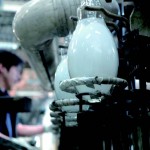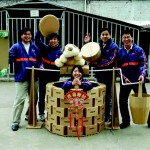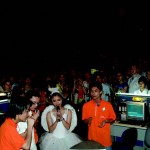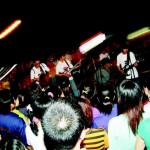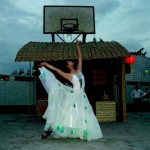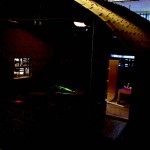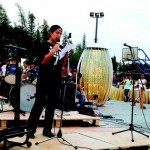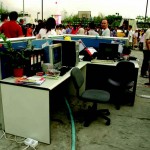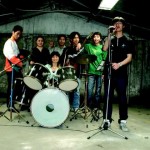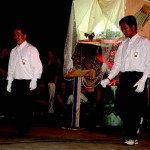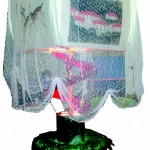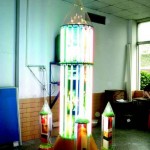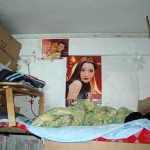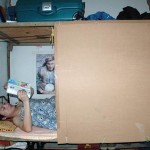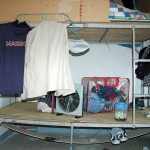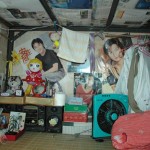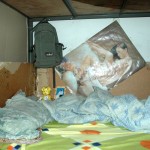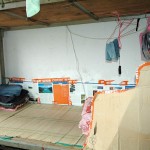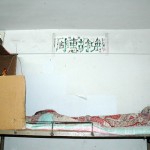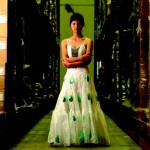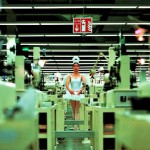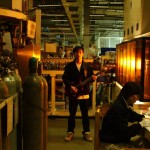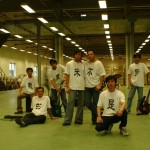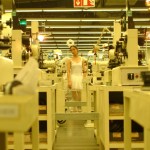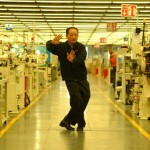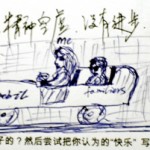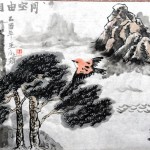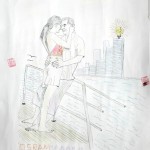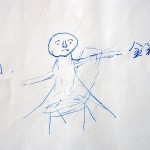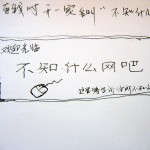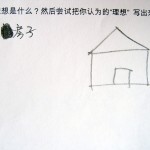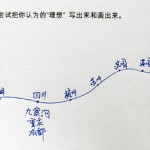The series of “What are they doing here?” Projects attempt to foster lively communication between Chinese artists and employees of Siemens subsidiaries. In these Projects, employees are invited not only to perceive their work environment in terms of business, but also to experience the emotional, social and creative dimension of it. This process-oriented approach aims to get everybody actively involved.
The artist Cao Fei was asked by Siemens OSRAM China Lighting Ltd. and Siemens Arts Program to create an independent artwork in collaboration with the employees in Foshan, Guangdong Province. Their inspirations, captured in drawings and sketches, were developed into five light installations, and subsequently followed by a jointly devised performance. The project was rounded off by a video entitled “Whose Utopia?”
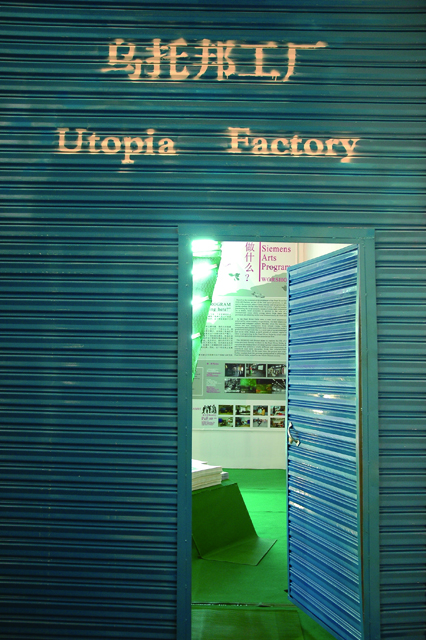
The Theatre of Life
Hu Fang
From the beginning, Cao Fei has always worked with a pronounced, exaggerated, theatrical visual vocabulary in order to transmit a sort of “New Sense.” This “New Sense” has, at the beginning of this new century, gradually projected the shared expressive character of a new, younger generation of Chinese artists. It involves fabrication (connected to a loss of sensation and referentiality), exaggeration (a byproduct of the void created by artificial reality), and a virtual conception of existence itself (connected to a period of changing values and the lack of clear standards thus implied). Only a small number of artists possess the humor of Cao Fei, whose power derives from a fundamental conception of “life as theatre and theatre as life.” Despite their cool appearance, Cao Fei’s works have another side. She has continually stressed her connection to everyday life and her attention to society, moving from these to develop an audio-visual expressive style reminiscent of documentary. In “Public Space: Give Me a Kiss,” a middle-aged man stands on a busy street corner enjoying himself as if no one were watching, dancing day in and day out, his movements silly but his expression earnest. “Father” observes the entire process of her father creating sculptures of revolutionary heroes, using this as a way to explore the idea of the artist’s personal history. These films may even look at first to be “traditional” or “anti-cool,” but they are rather an organic component of Cao Fei’s filmic world; they reflect her explorations of the absurd powers brought on by the urbanization process, as well as her strong interest in the relationship between individual and society. The power behind these creations allows them to break through any set notions of filmic style.
Theatre has always formed a parallel line in Cao Fei’s oeuvre, connected to her early days directing the theatrical troupe of the Guangdong Academy of Fine Arts. The theatre as a virtual, “translated” human stage is in a sense best able to convey people’s existential stances. In this way, Cao Fei’s 2005 production “PRD (Pearl River Delta) Anti-Heroes” might be seen as the most representative instantiation of this to date. Stitched together from comedic fragments, the “Anti-Heroes” portrayed on stage had wandered far from the mainstream social, economic, and cultural order. Coolies, beggars, gamblers, mistresses, fortune-tellers, trash-collectors, sellers of pirated DVDs: in this piece, commoners came together to create their own heaven. For Cao Fei, the geographic reality and non-conformist history of the PRD, combined with the abnormal social growth of recent years, have fermented into breakthroughs in everyday life; this chaotic life-force seeps through every crack. In 2005, China’s hottest social phenomenoon was the “Super Girl” singing contest show; from this one can see how entertainment has become a channel for political expression in China. “PRD Anti-Heroes” showed a broader picture of popular entertainment, which precisely conveyed Cao Fei’s own attention toward the existential attitude of the “commonfolk.” In the same way, her short about a milkman entitled “Milk,” her short about the existential attitude of youth in urban space “COS Players,” and a number of her other films all reflect her basic stance and attitude toward society.
Through a multivalent creative practice that includes both video and theatre, Cao Fei has developed a unique style of “vocalizing.” This style is neither a contrived reverence for society, nor is it aesthetic narcissism, but rather a way of creating an alternative “individual reality” by recourse to “hyper-realist” tactics. As she practices it, through collaboration with different groups, she also enables this “individual reality” to become a basis for interaction and involvement among different groups of people in a kind of public creative process. When she finally encountered the Siemens art project “What Are You Doing Here?” all of these experiences enabled the project to become a platform for a theatrical manifestation of a collective dream. Cao Fei’s “New Sense” runs up against pre-defined social space, catalyzing a rich and vivid synthesis of art and reality.
Walking amidst the assembly lines and assorted factory chambers, Cao Fei became sensitive to the value and position of the human in the face of such a vast system of production. This led her to use survey forms to enter into dialogue with workers from various areas and positions in the factory, and upon the foundation of this dialogue, to come up with the idea for her work. She took the question “What are you doing here?” and posed it to the workers. By reflecting on herself and others, she collected the dreams of each of her subjects, displaying them through slide installations, small theatrical performances, video, and other visual methods. Those brightly lit installations, and the people who stood, slightly confused, in their midst, served to make people mindful of how art can face an actually existing system of production, turning it into a “theatre.”
For Cao Fei, this creative program can also go a step further in explaining how the ever-expanding reach of global capital influences people’s understanding of life values, as well as their realities in the Pearl River Delta and throughout China. No matter how grandiose the topic of massive change may seem, in the end it resonates on the level of daily life and falls upon the heads of the “commoners.” It is they who apprehend the changes in the social system using all kinds of existential wisdom, and they who shoulder the fissures and pressures created by this transition. It is they to whom Cao Fei’s creations are open.
To view images, please visit :http://www.caofei.com/
